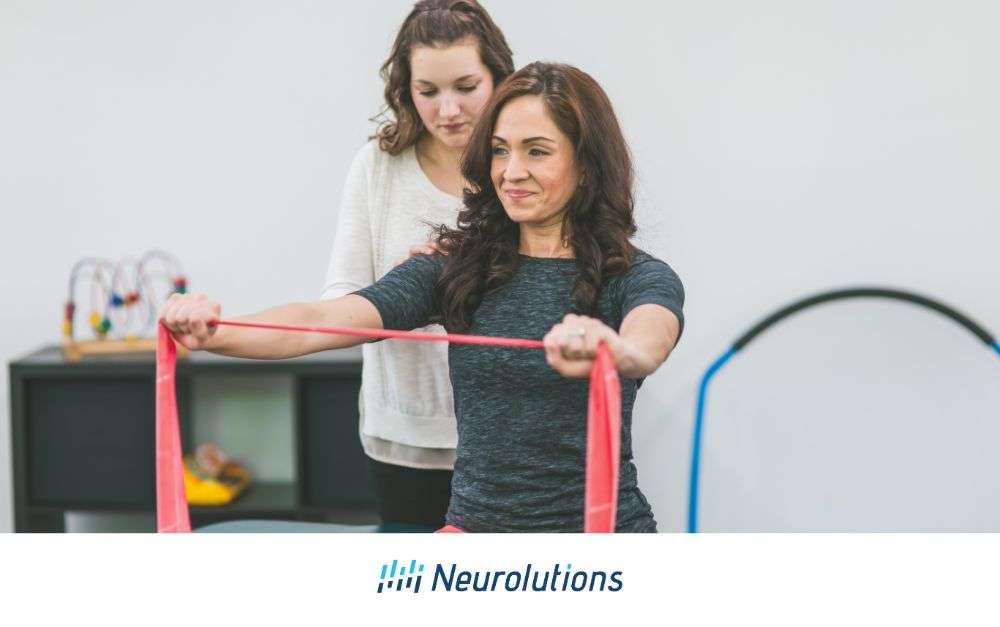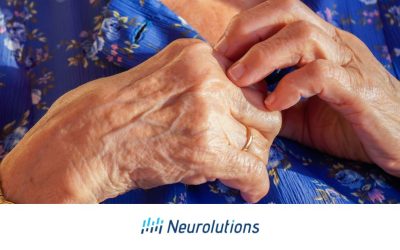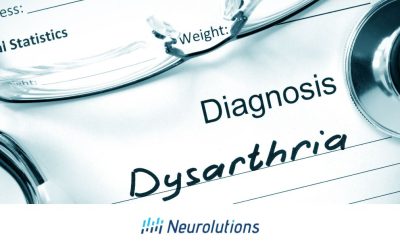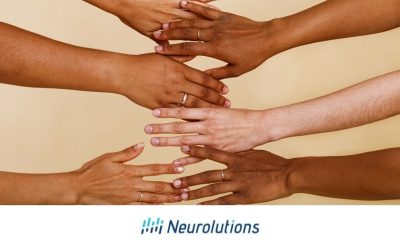Falls are a leading cause of injury among seniors, with a significant number experiencing them annually. They can lead to head and brain injuries, disability, and death.
Accidental falls can happen at any age, but are more common in senior-aged adults. It is the leading cause of injury for this age group (4, 1). An estimated 27% of all adults aged 65 and older experience at least one “slip and fall” accident each year, and 10% of seniors sustain multiple falls annually (1, 2 -2, 3). Seniors are the most likely age group to suffer head and brain injuries from a fall, potentially leading to permanent disability and premature death (3-4).
March is Brain Injury Awareness Month(5). While Traumatic Brain Injury (TBI) is commonly linked to military personnel, athletes, and survivors of accidents or abuse, there is a growing trend of adults aged 75 and above experiencing TBI due to falls, resulting in injury and fatalities. In 2020, the Morbidity and Mortality Weekly Report (MMWR) revealed a 17% increase in the rate of fall-related TBI deaths, notably with the most substantial increase occurring in adults aged 75 and older (6). The following article will discuss these injuries and potential strategies for preventing them.
Understanding the Risks – Types of Brain Injuries
TBIs, ranging from mild concussions to severe injuries, can be exacerbated by multiple mild TBIs or even minor impacts in the elderly.
The most common type of TBI at any age are concussions, and they are typically caused by a bump, blow, or jolt to the head (7). Concussions are considered a mild TBI and may temporarily result in headaches and trouble with concentration, memory, balance, mood and sleep. Other types of TBI include (8):
- Extra-axial hematoma: a blood clot that forms when there’s bleeding under the skull in the epidural and subdural areas
- Contusion: bruising of the brain
- Traumatic Subarachnoid Hemorrhage (TSH): bleeding in specific areas surrounding the brain
- Diffuse Axonal Injury (DAI): damage to nerve fibers in the brain
Brain injuries are categorized from mild to severe. Having multiple mild TBIs can increase the severity of brain injury for subsequent ones. Moreover, a mild bump on the head that might not cause any brain injury in a younger person can do so in an elderly person (9).
Strategies for Fall Prevention
Effective fall prevention for seniors includes removing home hazards, making lifestyle adjustments, wearing appropriate footwear, getting professional advice, and attending fall prevention programs.
The following are some of the most effective strategies for preventing falls for senior-aged people who are living at home:
Practice home safety measures:
Remove home hazards such as small objects on the floor, loose throw rugs, and anything that could cause an older-aged person to slip or trip on it. Install grab bars and railings in bathrooms, bathtubs, stairways, and entrance ways to the home. Ensure adequate lighting is utilized throughout the space, and avoid standing on ladders. Seniors with balance or mobility issues should use in-home mobility scooters, walkers, and canes as recommended.
Make lifestyle adjustments:
Perform daily physical therapy exercises and/or engage in a daily exercise routine that promotes flexibility, balance, and strength for fall prevention. Go for regular health exams, including vision and hearing testing. Participate in a weight management program if clinically diagnosed as obese, as obesity later in life can heighten the risk of falls.Ensure understanding of medication side effects and interactions, as some common medications can cause dizziness.
Wear appropriate footwear at all times:
Walking barefoot or in socks does not only place seniors at high risk of falling, but it also increases the risk of injuring the foot. “Slip and fall” accidents are also more likely to occur when wearing flip-flops, clogs, or poorly-fitting footwear. These types of shoes should be avoided by senior-aged people; instead, comfortable, supportive footwear such as jogging shoes or non-slip socks with grips should be worn for daily use.
Get professional advice or assistance if needed:
Senior-aged adults may benefit from a home visit by a social worker or other professionals that are trained in assisting seniors. They can perform a “slip and fall” risk assessment and recommend changes to increase home safety. For instance, suggestions might include rearranging kitchen pots and pans or bathroom products to make them more accessible without risking loss of balance.
Attend a fall prevention program to increase knowledge:
Health educators conduct workshops for seniors to help them learn “slip and fall” prevention strategies. These workshops are usually available at hospitals, public health centers, and senior centers, both in-person and online. Attending a fall prevention program is highly recommended for seniors or their loved ones.
Recognizing and Responding to Falls
Immediate medical attention may be required for falls resulting in severe pain, broken bones, or joint injuries. Survivors of stroke and TBI are at higher risk of falling.
While not all falls require a trip to a hospital or doctor’s office, seniors are more likely to break bones upon falling. Although only between 1-2% of falls by senior-aged people result in a hip fracture, 95% of hip fractures are caused by falls (10). Notably, up to 58% of elderly people die within one year of a hip fracture due to complications (11).
If an individual experiences a fall and encounters severe pain or is unable to move the injured body part, it is important for them to contact a healthcare provider. In the case of a broken bone or other joint injury, acting quickly to acquire treatment is imperative to the healing process. Otherwise, the fracture, ligament/tendon tear, or other soft tissue injury may take far longer to heal or may never fully recover.
Survivors of stroke and TBI face a heightened risk of falling, often due to paralysis, weakness, or impaired balance resulting from the brain injury. Regardless of the cause of the fall, if feasible, they should apply first aid to themselves or utilize an emergency alert system to seek assistance.
Recognizing and Responding to a Fall-Related Concussion:
Symptoms of a concussion after a fall, like dizziness or unequal pupil size, indicate a need for urgent medical consultation.
If an individual hits their head upon falling and experiences symptoms of a concussion, such as dizziness or one pupil appearing as a different size than the other one, it is essential to speak to a medical provider as quickly as possible. This is crucial because a concussion can cause confusion, which may interfere with decision-making abilities.
Medications and Chronic Health Disorders that can Increase Concussion Likelihood:
Certain medications and health disorders, such as Meniere’s disease or osteoarthritis, increase the risk of falls and concussions.
Medications like blood thinners and aspirin can interfere with the way that blood clots and therefore the process that is needed to stop bleeding. In the event of a hit to the head from a “slip and fall” accident, any brain bleeding is likely to be worse in a person utilizing either of these two types of medication. However, taking blood-thinning and/or aspirin is an important preventive therapeutic approach in people who have experienced a heart attack or are at increased risk of a heart attack. Thus, these individuals should not necessarily forgo these medications, but should tell first responders they’ve been taken after hitting their head.
Meniere’s disease and other inner ear disorders increase the risk of losing balance and falling. This is also true for stroke and TBI survivors with an injury to the cerebellum of the brain, since the cerebellum controls balance, movement, and coordination (12). Furthermore, Alzheimer’s disease is highly-linked to an increased risk for falling due to neurodegenerative processes affecting balance and control of body movements (13).
However, the health disorder most linked to “slip and fall” accidents is osteoarthritis (OA). OA is found in at least 80% of all people aged 50 and older and typically affects the hips, knees, or ankles (14). People with lower extremity OA are far more likely to fall while walking than people without it.
Community-Based Fall Prevention Programs
The CDC’s STEADI program and other community-based initiatives educate seniors on fall prevention, addressing the increased risk with age.
The Centers for Disease Control (CDC) has developed a program called STEADI (Stopping Elderly Accidents, Deaths and Injuries) for healthcare providers and public health clinics to educate their senior-aged patients in how to prevent falls (15). They have created educational materials, brochures for patients, and videos. Participating in community-based fall prevention programs is now widely recommended by healthcare providers and physical therapists to senior-aged people who have experienced a stroke or TBI.
Conclusion
As individuals age, their risk of experiencing a “slip and fall” accident increases, along with the risk of sustaining a traumatic brain injury (TBI). The aging process leads to physical changes in the brain and slower reaction times. This makes older people far more susceptible to experiencing trauma, including permanent disability and premature death, compared to a younger person (16). Therefore, it is imperative that seniors and their loved ones take steps to reduce the likelihood of a fall.
Seniors living at home should decrease clutter on floors, remove slippery throw rugs, and stop using step stools and ladders to reach shelf items. Moreover, it’s advisable for them to place grab bars in the bathroom and at home entrances, ensuring that they use them consistently.
In nursing homes, falls often occur when a patient with mobility problems attempts to walk to the bathroom without being accompanied by a staff member. Typically, this occurs at night, when the patient suddenly wakes up and feels an urgent need to use the restroom. Approximately 50% of nursing home residents experience a fall annually (17). It is important for loved ones to ask the nursing home employees what strategies they use to prevent falls, so that they may encourage their senior-aged loved one to take precautions.
By embracing fall prevention strategies in daily life, individuals can minimize the likelihood that themselves or their loved ones will experience a fall resulting in a TBI.
References:
- Centers for Disease Control (CDC). Older Adult Fall Prevention – Older Adult Falls Data. Webpage: https://www.cdc.gov/falls/data-research/index.html
- Al-Aama T. (2011) Falls in the elderly: Spectrum and prevention. Canadian Family Physician 57(7):771-776. [Erratum in: Can Fam Physician 2014: 60(3): 225]. Webpage: https://www.ncbi.nlm.nih.gov/pmc/articles/PMC3135440/#:~:text=Individuals%20who%20are%2065%20years,probability%20of%20falling%20of%2027%25.
- Vaishya R, and Vaish A. (2020). Falls in Older Adults are Serious. Indian J Orthop 54(1): 69-74. Webpage: https://www.ncbi.nlm.nih.gov/pmc/articles/PMC7093636/
- Brain Injury Association of America. Survival Rates from the Traumatic Brain Injury Model Systems. Webpage: https://www.biausa.org/professionals/research/tbi-model-systems/survival-rates-from-the-traumatic-brain-injury-model-systems
- US Department of Defense. News; Special Reports: Special Report – Brain Injury Awareness Month. Webpage: https://dod.defense.gov/News/Special-Reports/0316_tbi/
- Morbidity and Mortality Weekly Report (MMWR). (March 6, 2020). Brain Injury Awareness Month – March 2020. 69(9): 225. Webpage: https://www.cdc.gov/mmwr/volumes/69/wr/pdfs/mm6909a1-H.pdf
- Concussion Legacy Foundation. What is a Concussion? Webpage: https://concussionfoundation.org/concussion-resources/what-is-concussion
- Georges A, and Das JM. (Updated 2023). Traumatic Brain Injury. In: StatPearls [Internet]. StatPearls Publishing: Treasure Island, FL. Webpage: https://www.ncbi.nlm.nih.gov/books/NBK459300/
- Yee G, and Jain A. (Updated 2023). Geriatric Head Injury. In: StatPearls [Internet]. StatPearls Publishing: Treasure Island, FL. Webpage: https://www.ncbi.nlm.nih.gov/books/NBK553101/
- Yang Y, Komisar V, Shishov N, et al. (2020). The Effect of Fall Biomechanics on Risk for Hip Fracture in Older Adults: A Cohort Study of Video-Captured Falls in Long-Term Care. Journal of Bone and Mineral Research 35(10): 1914-1922. Webpage: https://www.ncbi.nlm.nih.gov/pmc/articles/PMC7689902/
- Schnell S, Friedman SM, Mendelson DA, et al. (2010). The 1-year mortality of patients treated in a hip fracture program for elders. Geriatric Orthopaedic Surgery and Rehabilitation 1(1): 6-14. Webpage: https://www.ncbi.nlm.nih.gov/pmc/articles/PMC3597289/#:~:text=In%20usual%20care%2C%20the%20reported,58%25%20(Table%201).&text=The%20relative%20risk%20of%20mortality,population%20increases%204%25%20per%20year.&text=The%20first%20year%20after%20a,be%20the%20most%20critical%20time.
- American Association of Neurological Surgeons. Anatomy of the Brain. Webpage: https://www.aans.org/en/Patients/Neurosurgical-Conditions-and-Treatments/Anatomy-of-the-Brain
- Washington University School of Medicine [St. Louis, MO]. Older people with early, asymptomatic Alzheimer’s at risk of falls. Webpage: https://medicine.wustl.edu/news/older-people-with-early-asymptomatic-alzheimers-at-risk-of-falls/
- Palo N, Chandel SS, Dash SK, et al. (2015). Effects of Osteoarthritis on Quality of life in Elderly Population of Bhubaneswar, India: A Prospective Multicenter Screening and Therapeutic Study of 2854 Patients. Geriatric Orthopaedic Surgery and Rehabilitation 6(4): 269-275.Webpage: https://www.ncbi.nlm.nih.gov/pmc/articles/PMC4647192/
- Centers for Disease Control (CDC). STEADI – Older Adult Fall Prevention. Patient & Caregiver Resources. Webpage: https://www.cdc.gov/steadi/patient.html#:~:text=CDC%20developed%20the%20STEADI%20(Stopping,from%20CDC%2DINFO%20on%20Demand.&text=Brochure%20for%20family%20caregivers%20with%20steps%20to%20help%20prevent%20older%20adult%20falls.
- Yee G, and Jain A. (Updated 2023). Geriatric Head Injury. In: StatPearls [Internet]. StatPearls Publishing: Treasure Island, FL. Webpage: https://www.ncbi.nlm.nih.gov/books/NBK553101/
- Agency for Healthcare Research and Quality (AHRQ). The Falls Management Program: A Quality Improvement Initiative for Nursing Facilities. Webpage: https://www.ahrq.gov/patient-safety/settings/long-term-care/resource/injuries/fallspx/man1.html




